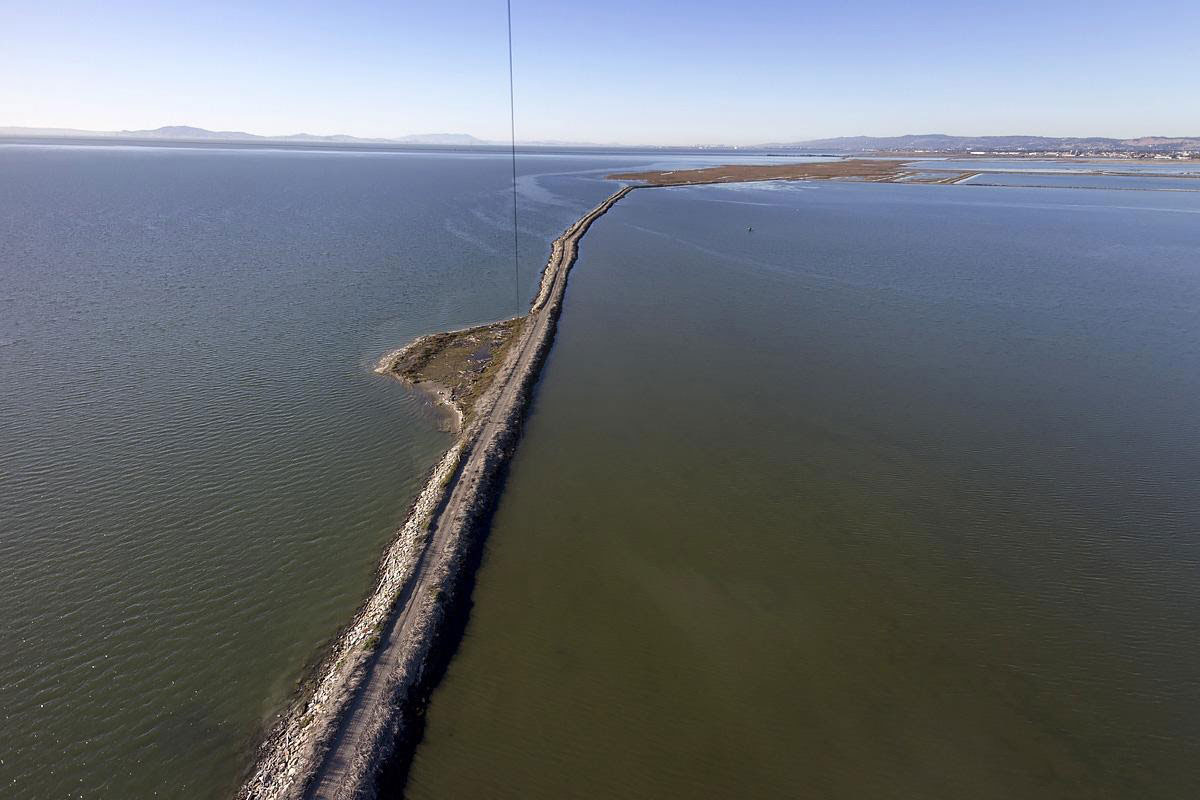
South Bay Salt Ponds
2019 – $15,000 Wetlands Restoration
The South Bay Salt Pond Restoration Project encompasses 15,100 acres of former salt ponds around the edge of South San Francisco Bay. It is the largest wetlands restoration project on the West Coast of the United States. The Project began in 2003, when the properties were acquired from Cargill Inc. Funds for the acquisition were provided by federal and state agencies and several private foundations. Those ponds are now part of the California Department of Fish and Wildlife’s (CDFW) Eden Landing Ecological Reserve near Hayward, and the U.S. Fish and Wildlife Service’s (USFWS) Don Edwards San Francisco Bay National Wildlife Refuge at the Bay’s south end. A third agency, the State Coastal Conservancy, plans and administers the Project.
This acquisition was the initial step in a larger campaign to restore 40,000 acres of lost tidal wetlands to San Francisco Bay – important because about 85% of its historic wetland have been lost to fill or alteration. The 50-year Project will be conducted in multiple phases at the Eden Landing, Ravenswood, and Alviso pond complexes.
The Project has three main goals:
- Restoration: Restore and enhance a mix of wetland habitats
- Recreation: Provide wildlife-oriented public access
- Flood Risk Management: Provide flood risk management in the South Bay
Restoration
The Project is providing critical new habitat for fish, birds and other wildlife, transforming a landscape the size of Manhattan into a thriving wetland ecosystem. The two main types of habitat restoration are:
Tidal marsh – Salt marsh, mud flats and sloughs provide shelter for endangered wildlife such as the salt marsh harvest mouse and Ridgway’s rail; rich feeding grounds for shorebirds; and nursery areas for young.
Tidal marshes are important for human communities too, as they absorb waves and high tides from storms and rising sea levels, protection the infrastructure behind them.
Enhanced managed ponds – The Bay Area serves as a critical stop along the Pacific Flyway for migratory birds, and many bird species became dependent on ponds in SF Bay during the 150 years in which salt has been made here. Enhancing and managing former salt ponds carefully provides appropriate feeding, resting and nesting habitats for shorebirds and waterfowl, both resident and migratory, including the threatened western snowy plover.
Recreation
The Project adds recreational opportunities along the Bay’s shoreline for millions of people. Our wildlife-compatible public access features include these:
- New trails, including Bay Trail segments and spurs, and connections to existing trail networks
- Viewing platforms and interpretive stations;
- Access to cultural resources such as historic salt-making sites;
- A kayak launch into waterways and the San Francisco Bay Water Trail
- Maintaining access to fishing and waterfowl hunting, where allowed
Flood Risk Management
The Restoration Project keeps a careful eye to the risks of flooding from tides, storms, and sea level rise.
- Flood Risk Management: The Project adds, raises, or improves inboard levees to maintain or increase existing levels of flood protection so that flood hazards do not increase.
- Sea Level Rise: The Project includes features to adapt to sea-level rise over time. Modeling indicates that tidal wetlands restored soon could keep pace with sea-level rise and buffer sea-level rise. Marshes are biologically productive habitats that capture large amounts of carbon from the atmosphere. Carbon storage benefits of tidal salt marshes may exceed those of freshwater marshes.
Accomplishments and Next Steps
With the completion of Phase 1 in April 2016, the Project has
- Restored 3,000 acres of tidal marsh and muted tidal habitat with endangered species returning
- Enhanced 710 acres of ponds for a variety of birds
- Created 7 miles of new public trails and added overlooks, historical exhibits, and a kayak launch
The Phase 2 actions are underway at two of the five planned locations, with others ramping up for construction in 2021. In all, the Phase 2 actions will address another 4,000 acres of habitat restoration, 5 miles of trails, and partnered with up to three external agencies to integrate their flood management needs into the work.
Eden Landing Ecological Reserve
The Phase 2 actions being planned for the Eden Landing Ecological Reserve in Alameda County, include over 2,200 acres of 11 former salt ponds. A mix of fully tidal and muted tidal marsh restoration and managed pond enhancements will be linked to several improved levees and 3 miles of new Bay Trail.
This planned work also includes an innovative pilot project for a Gravel Beach and Berm feature that would be built on the outer, bay-facing side of the Project’s edge. This feature would simultaneously provide roosting and foraging habitat for a mix of shorebirds and protect the existing levee from erosion. This is nature-based shoreline management in action. If the 300-foot pilot project is successful, a 2-mile long version of it would be installed there, returning a large stretch of shoreline to a habitat type that has been lost.
With funding from several sources, including the Seed Fund, this novel feature is midway through its design and environmental permitting phase and could enter into construction late in 2022.






